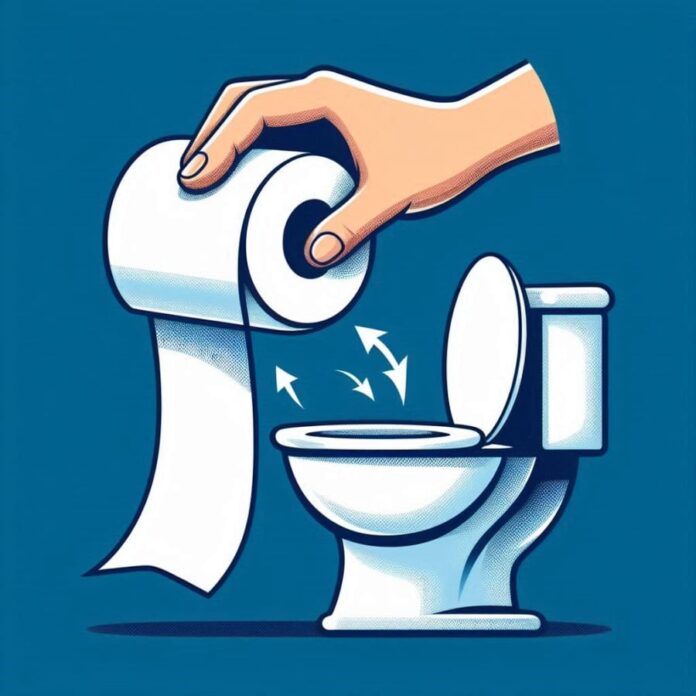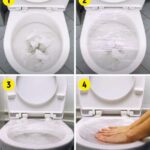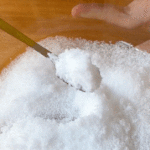Toilet bowls are an essential fixture in every household. Toilet paper is not only a common amenity but also serves the purpose of cleaning oneself. Additionally, you can use tissue paper to wipe the toilet seat before use. Furthermore, it is recommended to place toilet paper in the bowl before use.
Why should you put toilet paper in the bowl before use?
Each time we use the toilet, we may encounter the uncomfortable situation of water splashing onto our bodies. If this water remains in the bowl for an extended period, it can breed bacteria and cause unhygienic conditions. To minimize this, placing a piece of toilet paper in the bowl helps to effectively prevent water from splashing up.
Moreover, during the use of the toilet, especially when defecating, unwanted sounds may occur. Placing toilet paper in the bowl beforehand will help to reduce these embarrassing situations.
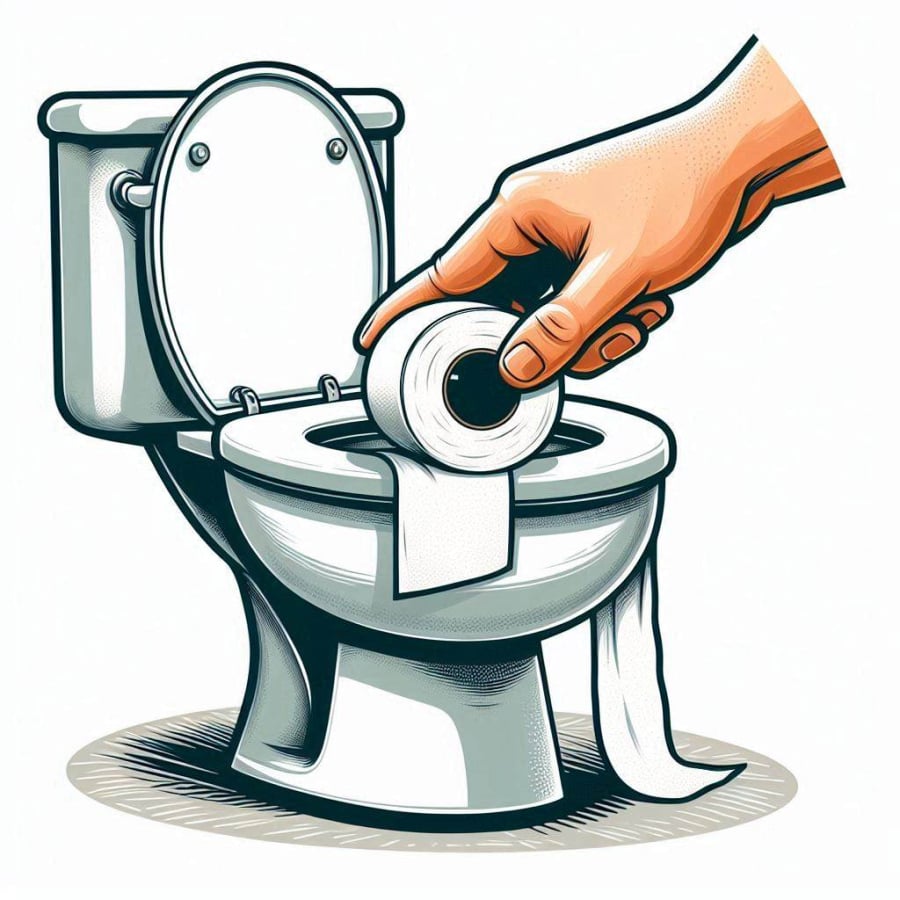
Why place toilet paper in the bowl before use?
Will putting toilet paper in the bowl cause clogging?
Many people worry that putting toilet paper in the bowl will lead to clogging. However, you need not be concerned about this issue.
Modern toilet paper is designed to easily dissolve in water and quickly disintegrate into small residue upon contact with water. Additionally, the glaze on today’s toilet bowls has a smoother surface, reducing adhesion and improving water drainage.
The drainage system has also been improved with larger sizes, often using PVC and PP materials, reducing the risk of rust and clogging.
For hygiene purposes, users should flush toilet paper down the toilet instead of disposing of it in the trash. This not only prevents bacterial growth from remaining dirt on the paper but also helps eliminate unpleasant odors.
The presence of bacteria and odors can contaminate everyday objects, posing potential health risks.
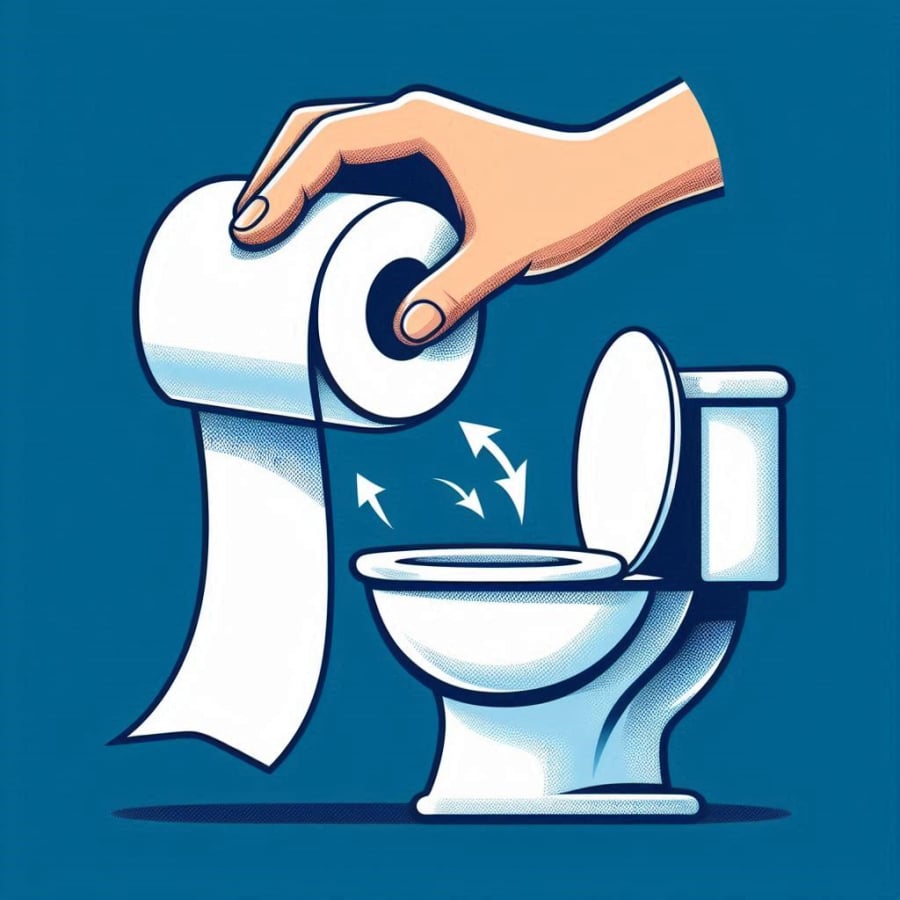
For hygiene purposes, users should flush toilet paper instead of disposing of it in the trash.
What to do if your toilet is clogged?
A clogged toilet can occur due to various reasons, such as a full septic tank, objects falling into the bowl, or a long-overdue septic tank cleaning. To address this issue without calling a professional septic tank cleaning service, you can try the following methods:
Use adhesive tape or plastic wrap
You can use adhesive tape or plastic wrap to seal the toilet bowl opening. Ensure that the opening is completely sealed, with no gaps. After sealing, flush the toilet once or twice to let the water pressure build up and then press the tape down firmly. The pressure and pressure differential will clear the blockage. Finally, remove the tape and clean any adhesive residue with water.
Use a toilet plunger
A toilet plunger, also known as a pittong, is an effective tool for unclogging toilets. Place the plunger precisely over the bowl hole and start plunging vigorously. Repeat this action until you see the water level in the bowl start to drop. Don’t forget to flush again to ensure the toilet is clear.

A toilet plunger is an effective tool for unclogging toilets.
Use dish soap
Dish soap has strong cleaning properties and a slippery nature, which helps clear blockages in pipes and, thus, toilet bowls. Heat a bucket of water to a moderate temperature to avoid damaging the toilet bowl’s glaze. Add a few drops of dish soap into the bowl, then slowly pour in half a bucket of warm water, and wait for about 20 minutes. Finally, flush the toilet to check the result. If it is still clogged, you can repeat this process once or twice more.
Use chemical drain cleaners
Chemical drain cleaners are specialized products designed to dissolve blockages. These products are easily accessible and can be used by wetting the powder before application or by pouring the dry powder directly into the toilet bowl. If wetting, use one to two packets of powder, mixing it with water to form a thick paste. Pour the mixture into the bowl and wait for six to eight hours for the powder to corrode the debris. After this period, flush the toilet with clean water to complete the unclogging process. This method is highly effective in saving time and money.

























